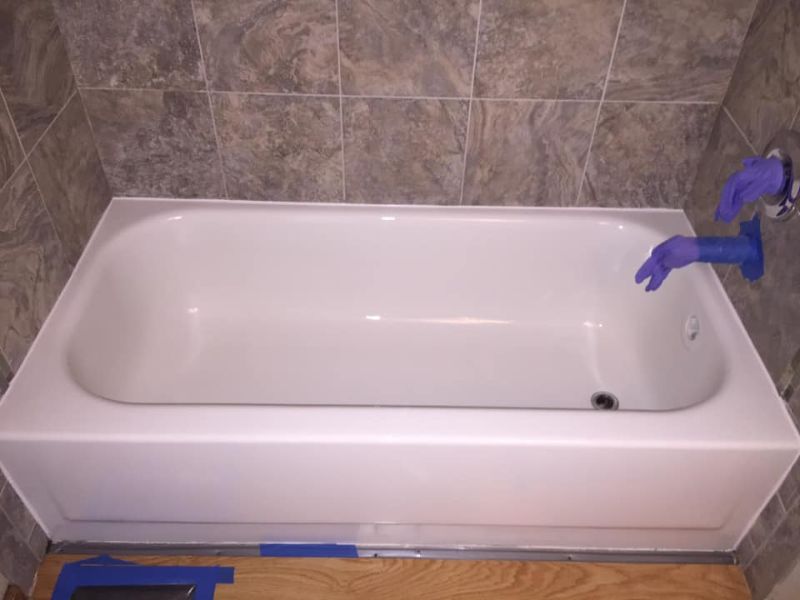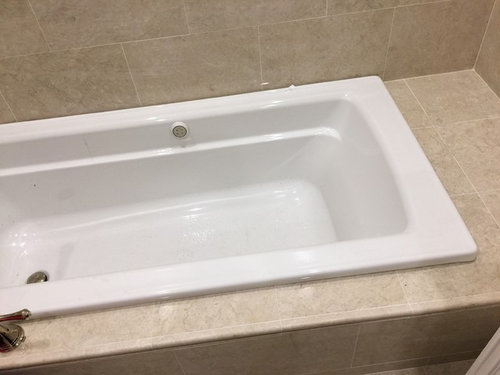Step Tutorial for Bathtub Installation
Step Tutorial for Bathtub Installation
Blog Article
Are you currently searching for critical info around Installing A Bathtub?

Mounting a bathtub isn't specifically rocket science, yet it does call for solid plumbing, carpentry, as well as sometimes, tiling abilities. Replacing an old tub with a brand-new one is likewise a moderately difficult task. If the old tub is conveniently accessible, the job can move easily; if you need to open up a wall to remove the old tub as well as position the brand-new tub, the task is much harder. In either instance, the job is within a house handyman's skills, although you will require a helper to move out the old bathtub and also embeded in the new one. See to it you have actually certified yourself for the job and are comfortable trying it. Rather than hiring a contractor to take control of a halfway-completed job, it is much better to think about utilizing one prior to you begin. Opportunities are you may require a professional plumber to make tube connections.
This post will assist you mount a new bath tub in your bathroom if you have actually already gotten a brand-new bathtub and also don't require to transform the setup of your previous water pipelines.
Your tools and product checklist must make up the following:
Removing Old Touches
If you require to change old faucets with brand-new ones as a part of your setup, then the first thing you ought to do is disconnect the water. After doing so, activate the taps to drain pipes any kind of water continuing to be in the system. The process of eliminating the existing taps can be fairly troublesome because of the restricted gain access to that is typically the case.
Utilize a basin wrench (crowsfoot spanner) or a tap tool to undo the nut that attaches the supply pipelines to the faucets. Have a towel ready for the staying water that will originate from the pipelines. Once the supply pipelines have been gotten rid of, use the same tool to loosen up the nut that holds the taps onto the bath/basin. You will require to stop the single faucets from transforming throughout this procedure. As soon as the faucets have actually been gotten rid of, the holes in the bath/basin will certainly have to be cleansed of any type of old sealing substance.
Before carrying on to fit the brand-new faucets, compare the pipeline links on the old faucets to the brand-new faucets. If the old faucets are longer than the new taps, after that a shank adapter is required for the new taps to fit.
Suitable New Touches
If the tails of the new faucets are plastic, then you will certainly require a plastic connector to prevent damage to the thread. One end of the connector fits on the plastic tail of the faucet as well as the various other end supplies a link to the existing supply pipes.
If you need to fit a monobloc, then you will certainly require minimizing couplers, which attaches the 10mm pipeline of the monobloc to the basic 15mm supply pipeline.
Next off, position the tap in the installing hole in the bath/basin ensuring that the washers remain in place between the tap and also the sink. Safeguard the tap in place with the supplier given backnut. When the faucet is securely in place, the supply pipes can be linked to the tails of the faucets. The faucets can either be linked by using corrugated copper piping or with regular tap connectors. The former type needs to be attached to the faucet finishes first, tightening just by hand. The supply pipes can later on be linked to the other end. Tighten up both ends with a spanner after both ends have been connected.
Setting up the Tub
Utilizing both wooden boards under its feet, put the bathtub in the required position. The wooden boards are handy in equally spreading the weight of the bathtub over the area of the boards as opposed to focusing all the weight onto four little points.
The following goal is to make certain that the bathtub is leveled all round. This can be achieved by checking the spirit level and changing the feet on the bath tub up until the level reads degree.
To mount faucets, fit all-time low of the outermost adaptable tap adapter to the proper supply pipeline by making a compression sign up with; after that do the same for the various other tap.
Switch on the water and examine all joints and brand-new pipework for leaks and tighten them if necessary. Fill up the tub and additionally inspect the overflow outlet and the normal outlet for leaks.
Ultimately, fix the bath paneling as explained in the supplier's instruction manual. Tiling and also sealing around the bathtub ought to wait till the bathtub has actually been utilized a minimum of once as this will settle it into its final placement.
Planning for the Installment
First of all, the sustaining framework provided with the bathroom ought to be fitted (if required) according to the producer's instructions. Next off, fit the taps or mixer to the tub. When fitting the faucet block, it is very important to make sure that if the tap comes with a plastic washing machine, it is fitted between the bathroom as well as the faucets. On a plastic bathroom, it is also reasonable to fit a supporting plate under the faucets unit to stop stress on the bath tub.
Fit the adaptable faucet adapters to the bottom of the two taps utilizing 2 nuts as well as olives (sometimes supplied with the bathtub). Fit the plug-hole outlet by smearing mastic filler round the sink electrical outlet hole, and afterwards pass the outlet with the hole in the bathroom. Make use of the nut provided by the manufacturer to fit the plug-hole. Examine the plug-hole outlet for an inlet on the side for the overflow pipe.
Next, fit the end of the flexible overflow pipe to the overflow outlet. Afterwards, screw the pipeline to the overflow face which must be fitted inside the bath. Make certain you make use of every one of the provided washing machines.
Attach the catch to the bottom of the waste electrical outlet on the bath tub by winding the thread of the waste electrical outlet with silicone mastic or PTFE tape, and screw on the trap to the outlet. Attach all-time low of the overflow tube in a comparable manner.The bathroom ought to now prepare to be fitted in its final position.
Tiling Around the Tub
In the location where the bathroom meets the ceramic tile, it is necessary to seal the joins with a silicone rubber caulking. This is very important as the fitting can relocate sufficient to break a rigid seal, creating the water to permeate the wall between the bath as well as the tiling, leading to difficulties with dampness and also possible leakages to the ceiling below.
You can pick from a range of coloured sealers to blend in your components as well as installations. They are sold in tubes and cartridges, as well as are capable of sealing voids as much as a size of 3mm (1/8 inch). If you have a bigger gap to fill up, you can load it with twists of drenched paper or soft rope. Remember to always fill up the bath tub with water before sealing, to enable the activity experienced when the bathtub remains in use. The sealant can break rather early if you do not consider this activity before sealing.
Additionally, ceramic coving or quadrant tiles can be made use of to border the bathroom or shower tray. Plastic strips of coving, which are easy to use and also reduce to size, are likewise easily available on the market. It is advisable to fit the tiles utilizing waterproof or water-proof sticky and also grout.
Bathtub Installation
How Important Is A Bathtub To Your Home?
High-quality baths, showers, and other bathroom updates are necessary when considering a smart investment in your home. It’s a room that you go to every day and one that is constantly being used by guests.The bathroom is one of the top trafficked rooms in a home and also one of the most valuable in terms of home resale.
Install Piping Before Tub
You will be using your existing drain and waste vent system, but pipes required include the hot and cold water supply lines and a pipe leading to a shower head. A mixing valve and shower head are also needed. Air chambers may be required.
Position the Tub
Lower the tub into place so that the continuous flange fits against the wall studs and rests on 1’x4' or 2’x4' supports. Anchor the tub to the enclosure with nails or screws inserted through the flanges into the studs.
NOTE: Remember, bathtubs and shower stalls may require support framing. A bathtub filled with water is extremely heavy, so check building codes and framing support before installing the tub.
Assemble Drain Connections
Assemble the bathtub drain connections by connecting the tub overflow with the tub drain above the trap, not beyond it. The trap will have a compression fitting that screws over the arm of the overflow assembly.
Place a Pipe For the Shower Head
First, locate a brass female threaded winged fitting and attach it to a framing support via a screw or a nail. Then run a pipe up the wall for the shower head. Sweat or solder the other side of the brass fitting to the top of the pipe.
Attaching Hot and Cold Water Lines
Attach your water lines for both hot and cold by sweating these directly into the hot and cold ports of the mixing valve. The mixing valve will be how water enters the tub’s system, not by the pipes themselves.
Install the Spout
Extend a piece of 1/2 inch pipe, or whichever length is specified in the manufacturer’s instructions, for the tub spout. Sweat on a male threaded fitting at the end of the pipe or use a brass nipple of the proper length and a 1/2 inch cap.
NOTE: At this point you should have your rough-in plumbing work inspected before proceeding further.
Check For Leaks
Restore the water pressure and check the drain connection and the supply pipes for any sign of leaking.
estore the Bathroom Wall
Replace the wall with moisture-resistant drywall as a base for your wall covering. Seal the joints between the wall and your new tub with silicone caulk as protection against water seepage.
https://www.berkeys.com/2016/12/02/bathtub-installation-dallas/

We hope you liked our article about How to Install a Bathtub: Install an Acrylic Tub and Tub Surround. Thanks a ton for taking a few minutes to browse our piece. Are you aware of another individual who is fascinated with the subject? Do not hesitate to share it. Kudos for your time. Come back soon.
Visit Homepage Report this page